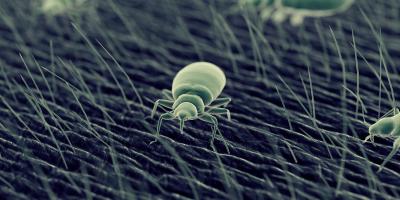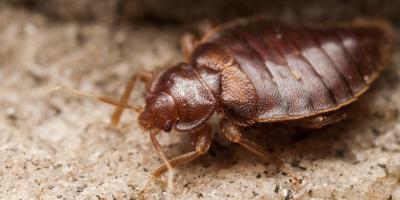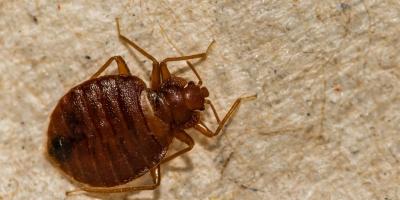Protection Against Bed Bugs While Your College Student is Home for the Holidays

You’ll be delighted to see your college student come home this Thanksgiving or winter break, and you’re probably even fine with the trunk-load of dirty laundry they pack, too. But there’s one thing you’d rather they leave back on campus: bed bugs.
Unfortunately, they might not even realize that a few dozen or more of these tiny invasive creatures could be tagging along with them, hiding just about anywhere from their bedding to their backpack, purse or duffel. Bed bugs, like little camouflaged campus souvenirs, might even be tucked away in the folds of the dirty clothes that are hiding in the trunk waiting to be washed.
A Common Challenge on Campus
Bed bugs are a more common problem than many people realize, especially in environments with a lot of people sleeping in limited space with lots of movement between rooms—like dorms. Poor personal and environmental hygiene (i.e. cleaning up after yourself) worsen bed bug problems, and unfortunately some college students are notoriously bad at both.
Even though you’d expect your child’s college to have a pest control program on the case, the truth is a lot of times an infected person doesn’t even know they have bed bugs, so the issue goes unreported. Students go to bed exhausted, leaving them much less likely to notice a bed bug bite.
Not to mention, bed bugs are notoriously good at hiding, preferring to couch themselves near where their food source—humans—sleep; therefore, they’re often not even discovered until there’s a full-blown infestation. In fact, most people don’t even know how to recognize bed bugs, even when they’re staring them in their beady little eyes.
Implement a Smart Bed Bug Strategy
Since you can’t depend on your college student to know if they’re carrying bed bugs home with them, it’s up to you to plan a good defense, which—whether your kid plays sports or not—should always start with a good offense. Start by giving your son or daughter what you sent them away to get: an education.
The first thing that you should both know is how to identify them: Bed bugs are oval-shaped, reddish-brown insects, about the size of an apple seed. What people usually spot before the actual bugs, however, are the black, diamond-shaped excrement stains they leave behind after each feeding, about the size of an ink stain left by a pen. In addition, you may even notice the occasional rusty, reddish-brown stains they leave on sheets and bedding when they’re inadvertently crushed in the middle of a meal.
To hunt for bed bugs, peel back the layers of bedding one at a time, starting with the comforter, eventually taking the sheets off completely. Then, check the frame, take a close look behind the headboard and nightstands, especially underneath and around the furniture’s feet. If your college student discovers bed bugs in any of these places (or anywhere else, for that matter), instruct them find the number for campus facilities management to report them as soon as possible.
Even if they don’t find evidence of bed bugs, you’ll still want to increase your defenses at home. A bed bug mattress and box spring encasement (similar to the ones allergy-sufferers use, but specifically designed to combat bed bugs), will help make the beds in your home less hospitable to the critters. Additionally, interceptor traps that go underneath furniture feet are great not just for stopping the spread of bed bugs, but for also trapping them in a place where you’ll actually see them.
Just to be safe, after your college student heads back to school, make sure to run their bedding through a hot dryer before washing to kill off any bed bugs that might be lurking. Then, vacuum their room thoroughly, keeping an eye out for any evidence of bed bugs.
If you do encounter telltale signs of a budding bed bug infestation, contact a pest control professional immediately. Learn more about our expert bed bug process and discover why it takes a pest management professional to get rid of bed bugs once and for all.



